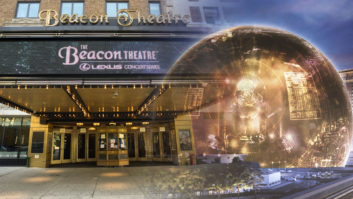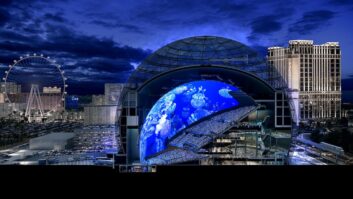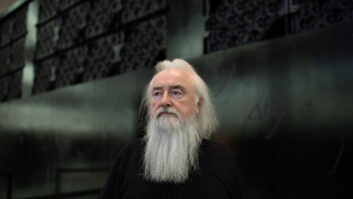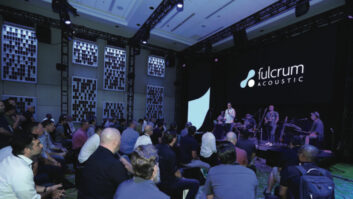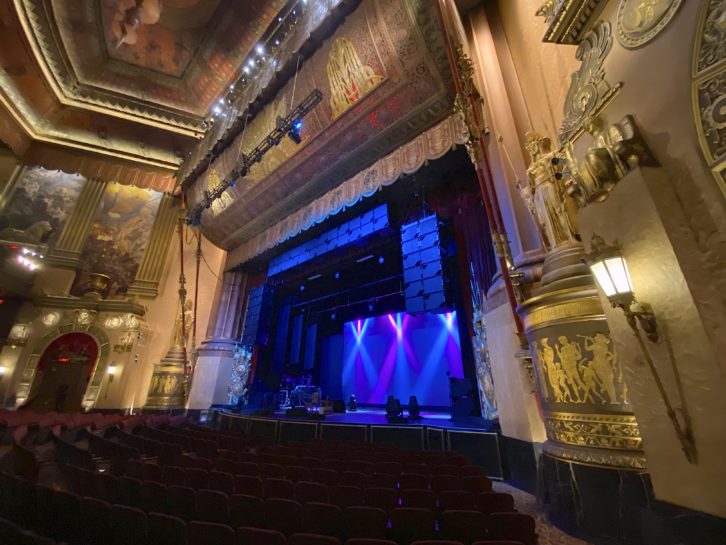
New York, NY (August 29, 2022)—The $1.8 Billion MSG Sphere in Las Vegas promises to be the most technologically advanced venue on the planet when it opens next year, and among the 20,000-capacity room’s many draws will be Sphere Immersive Sound, an audio technology designed to make every seat in the house sound like eighth row center. Rather than wait for the venue’s debut to unveil the new live sound technology to the world, MSG Entertainment has installed it into New York City’s Beacon Theatre, and debuted the new system in late August.
“We completed the design and fabrication of the speakers about a year ago,” Stuart Elby, senior vice president of Advanced Engineering at MSG Ventures told Mix. “Part of the success of any venue, including the Sphere, is going to be the artists learning this new technology, accepting it and bringing it into their acts. It’d be a shame to wait until the Sphere opens and be training then [so we] put it in a great venue—the Beacon Theatre—[so that] some of the artists who might end up in the Sphere start to get their hands on it and think about it. This is great for New York, great for the audience here, and it’s also sort of a training ground for what could come in the Sphere or other things.”
Sphere Immersive Sound was jointly developed between German audio company Holoplot and MSG Ventures, an MSG Entertainment subsidiary that creates live entertainment technologies for use across the parent company’s portfolio of venues and entertainment properties. MSG Ventures’ Advanced Engineering group, in turn, has developed the audio system, video display system, haptics, immersive seating, wind effects and more that will come into play within the Sphere.
The Sphere Immersive Sound system uses beamforming to provide targeted audio to every seat, and the technology can be used not only to ensure uniformity of sound quality, but also non-uniformity as well, thanks to its ability to provide tightly defined localization of sounds. For instance, audio content—say a speech given before an international audience—could be custom tailored to different parts of the theatre, with the native tongue presented to the center of the venue and alternative translations provided simultaneously to other sections of the audience.
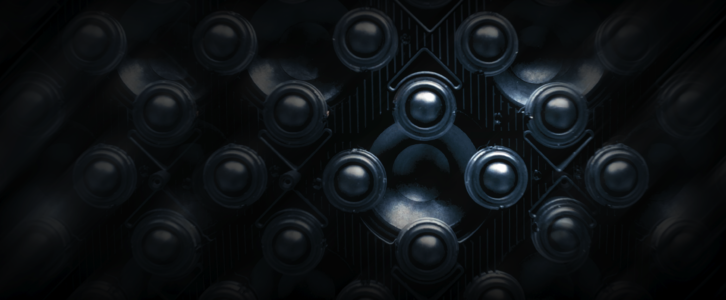
The System Itself
The Beacon Theatre’s system consists of five arrays in an L-C-R configuration, with its beam configurations customized to the venue to provide the orchestra, loge and lower and upper balcony with equal coverage. Considering that the venue was built in 1929, it’s no surprise that the Beacon needed extensive preparation in order to handle the weight and power demands of the sizable system. Electrical and rigging upgrades took roughly three months to complete in order to accommodate a total hang of nearly 25,000 lbs—a major step up from the venue’s previous JBL/QSC-centric system that weighed in around 4,000 lbs.
The system is comprised of 28 MD80S speakers, which weigh 400 lbs. apiece and have subwoofers built into them, and 24 MD96 speakers, each weighing 200 lbs. The central flown array, hung horizontally across the proscenium, sports 12 MD80S and 12 MD96 speakers, while the side hangs each consist of a half-dozen of each model. Supplementing them are left and right ground-stacked arrays of two MD80S each. The full load-in and tuning of the system took 12 days in all.
“When you talk about beamforming, you think about where you’re putting the sound, but the other thing that’s even more important is where you don’t put sound,” Elby noted. “One of the reasons that we want this technology for the Sphere is that if you think about it, a spherical structure is the worst shape to put music in, because it’s going to go everywhere. We needed a technology solution—which this is—that could have the energy of the audio focused on the audience seats, and not on the walls…. For a live show, we’re going to keep the sound off the walls so that the audience is hearing it, but you don’t want to bring the room into it unless the artist wants to. It’s an artistic decision at that point; it’s not ‘Oh, I can’t change it; it’s just the way the room is.’”
